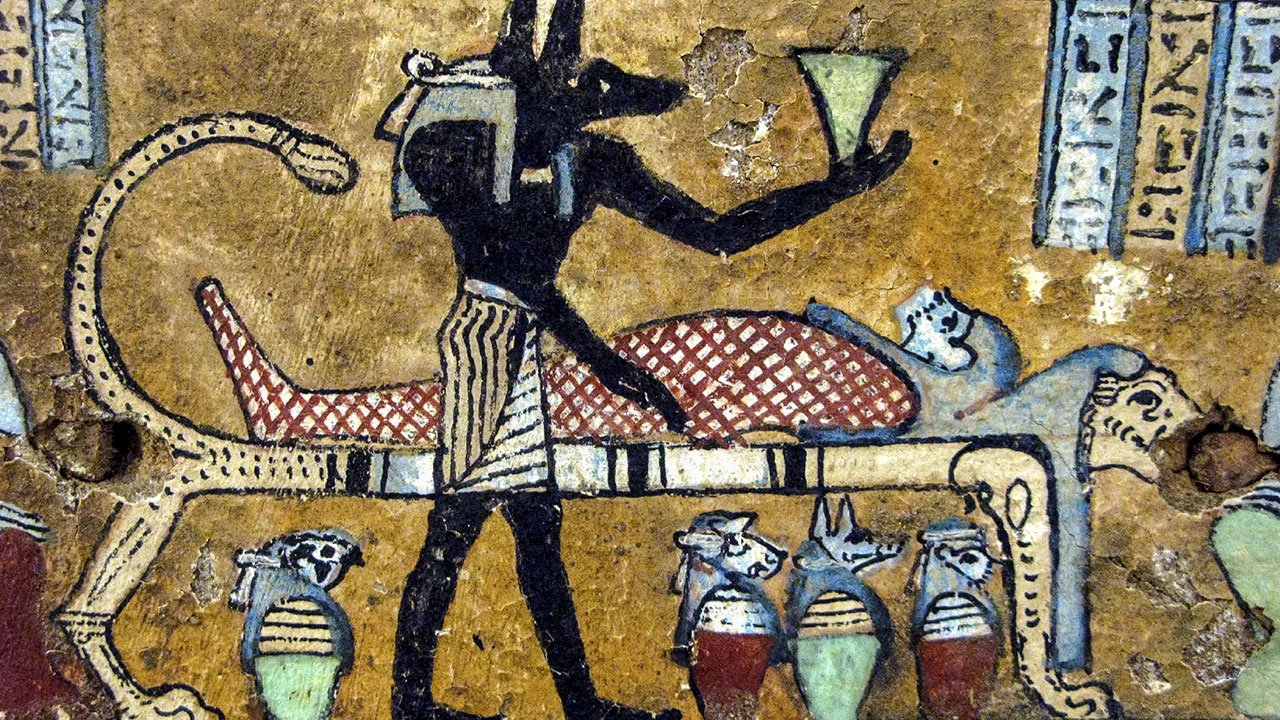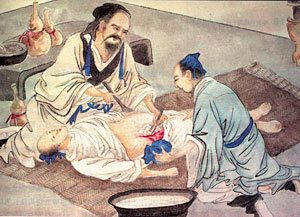“Interconnectivity” is a mixed-media painting exploring the checkered history of medicine, the study of healing, and our shared humanity.
The background is comprised of various pages and images from historical and modern medical texts from around the world, together with more modern images of protests and human experimentation. Visible through translucent layers of color, the background images acknowledge the history of medicine, with its ups and downs. As the focal point of the piece, the DNA molecule and implied lemniscate (infinity symbol) represent our diversity, as well as our interconnectivity. Intentionally reminiscent of the caduceus, the infinity symbol reminds health professionals of their lifelong commitment of learning to heal and practicing the art of medicine by learning from history and applying all required measures for the benefit of the sick— “to do no harm.”
Meet the Artist
Read a Q&A with Christine Kuhn, the Lexington-based artist who created “Interconnectivity”
The History of Health Care Segregation
History
Adapted from The Atlantic: Segregation is baked into the way people and institutions discuss health care at its most basic levels. Racial differences in almost every health outcome—from infant mortality to life expectancy––are obvious and pronounced, especially between white people and black people. Perhaps because of the sheer size of the evidence of health disparities, all sides of health-policy debates acknowledge their existence, a consensus that has yet to be achieved in debates about education or criminal justice. Yet segregation in health care is rarely discussed in those terms, and its importance in shaping the larger narrative of race in America is often ignored.
Like other forms of segregation, health care segregation was originally a function of explicitly racist black codes and Jim Crow laws. Many hospitals, clinics, and doctor’s offices were totally segregated by race, and many more maintained separate wings or staff that could never intermingle under threat of law. The deficit of trained black medical professionals (itself caused by a number of factors including education segregation) meant that no matter where black people received health-care services, they would find their care to be subpar compared to that of whites. While there were some deaths that were directly attributable to being denied emergency service, most of the damage was done in establishing the same cumulative health disparities that plague black people today as a societal fate. The descendants of enslaved people lived much more dangerous and unhealthy lives than white counterparts, on disease-ridden and degraded environments. Within the confines of a segregated health-care system, these factors became poor health outcomes that shaped black America as if they were its genetic material.
Key Terminology
- Access to Care means having the timely used of personal health services to achieve the best health outcomes.
- Access to health care consists of four components:
Coverage: facilitates entry into the health care system. Uninsured people are less likely to receive medical care and more likely to have poor health status.
Services: Having a usual source of care is associated with adults receiving recommended screening and prevention services.
Timeliness: ability to provide health care when the need is recognized.
Workforce: capable, qualified, culturally competent providers.
- Access to health care consists of four components:
-
Racism is a form of prejudice that assumes that the members of racial categories have distinctive characteristics and that these differences result in some racial groups being inferior to others. Racism generally includes negative emotional reactions to members of the group, acceptance of negative stereotypes, and racial discrimination against individuals; in some cases it leads to violence.
-
Health Equity is the state in which everyone has a fair and just opportunity to attain their highest level of health. Achieving this requires focused and ongoing societal efforts to address historical and contemporary injustices; overcome economic, social, and other obstacles to health and healthcare; and eliminate preventable health disparities.
-
Health Disparities are preventable differences in the burden of disease, injury, violence, or opportunities to achieve optimal health that are experienced by socially disadvantaged populations. Health disparities are inequitable and are directly related to the historical and current unequal distribution of social, political, economic, and environmental resources.
-
Quality of Care is the degree to which health services for individuals and populations increase the likelihood of desired health outcomes.

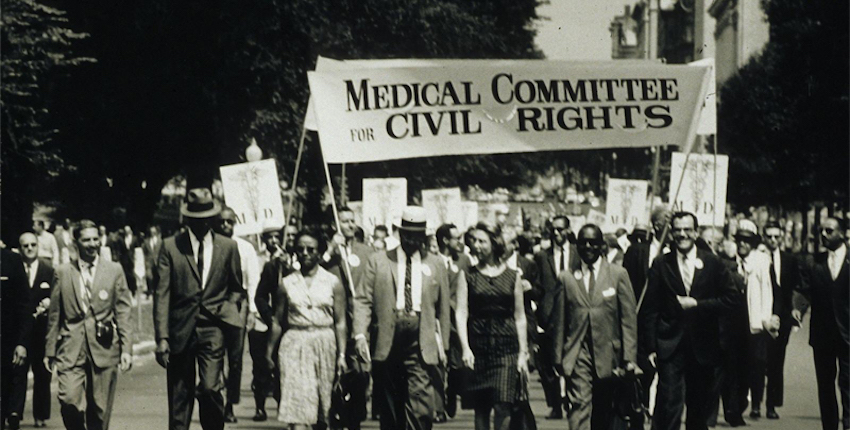
The History of Forced Sterlization
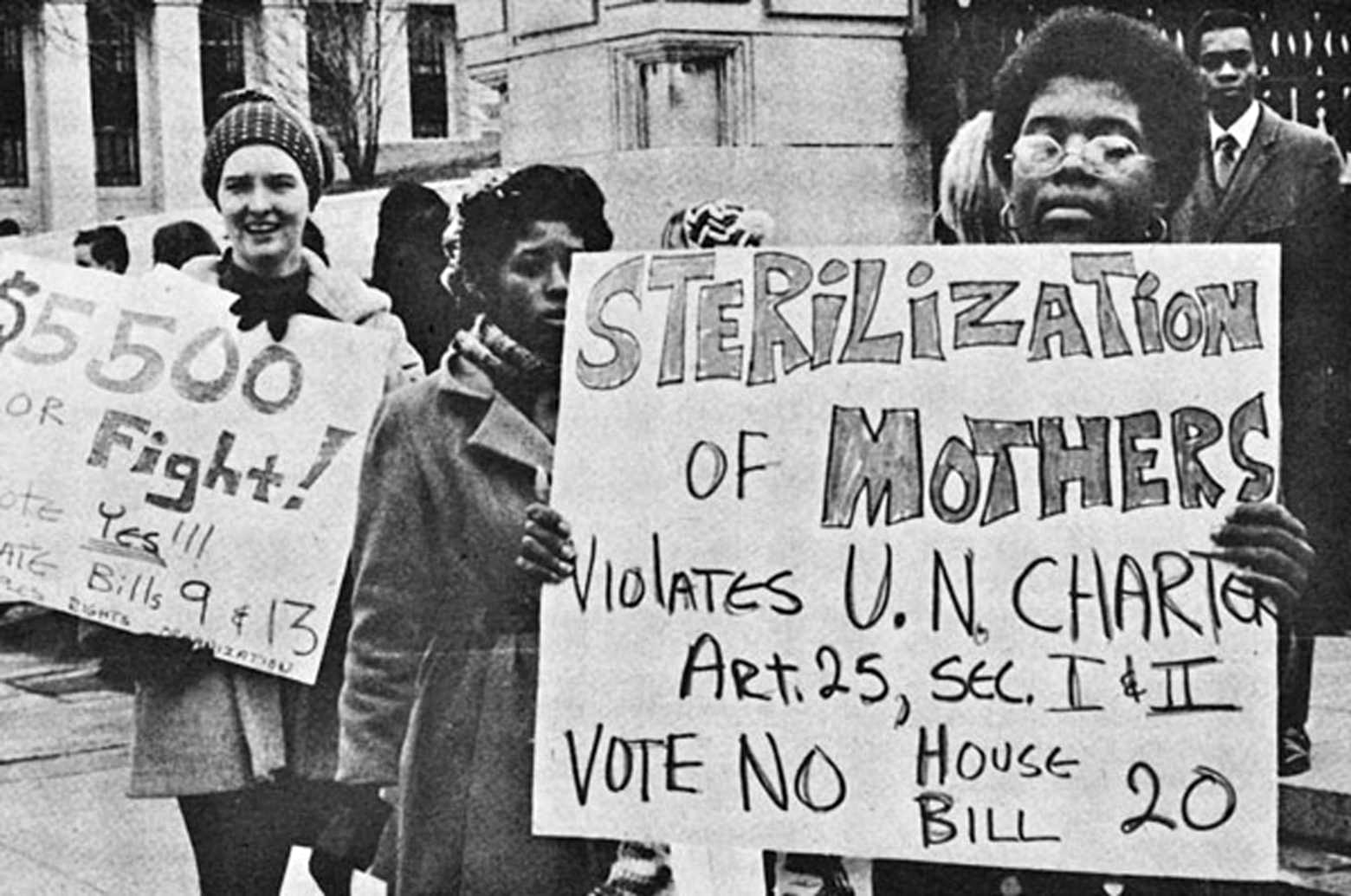

History
In England during the late nineteenth century, intellectuals, especially Francis Galton, called for a variety of eugenic policies aimed at ensuring the health of the human species. In the United States, members of the Progressive movement embraced eugenic ideas, especially immigration restriction and sterilization. Indiana enacted the first eugenic sterilization law in 1907, and the US Supreme Court upheld such laws in 1927. State programs targeted institutionalized, mentally disabled women. Beginning in the late 1930s, proponents rationalized involuntary sterilization as protecting vulnerable women from unwanted pregnancy. By World War II, programs in the United States had sterilized approximately 60,000 persons. After the horrific revelations concerning Nazi eugenics (German Hereditary Health Courts approved at least 400,000 sterilization operations in less than a decade), eugenic sterilization programs in the United States declined rapidly. Simplistic eugenic thinking has faded, but coerced sterilization remains widespread, especially in China and India. In many parts of the world, involuntary sterilization is still intermittently used against minority groups.
Reilly PR. Eugenics and Involuntary Sterilization: 1907-2015. Annu Rev Genomics Hum Genet. 2015;16:351-68. doi: 10.1146/annurev-genom-090314-024930. PMID: 26322647.
Key Terminology
- Eugenics is the scientifically erroneous and immoral theory of “racial improvement” and “planned breeding,” which gained popularity during the early 20th century. Eugenicists worldwide believed that they could perfect human beings and eliminate so-called social ills through genetics and heredity.
- Sterilization is defined as “a process or act that renders an individual incapable of sexual reproduction.” Forced sterilization occurs when a person is sterilized after expressly refusing the procedure, without her knowledge or is not given an opportunity to provide consent. Coerced sterilization occurs when financial or other incentives, misinformation, or intimidation tactics are used to compel an individual to undergo the procedure. Women with disabilities are particularly vulnerable to forced sterilizations performed under the auspices of legitimate medical care or the consent of others in their name.
Additional Resources
- https://www.pbs.org/independentlens/blog/unwanted-sterilization-and-eugenics-programs-in-the-united-states/
- https://bpr.berkeley.edu/2020/11/04/americas-forgotten-history-of-forced-sterilization/
- https://www.npr.org/sections/health-shots/2016/03/07/469478098/the-supreme-court-ruling-that-led-to-70-000-forced-sterilizations
A Closer Look at Modern Western Medicine
History
The origins of medicine are ambiguous, but all great ancient civilizations developed their own ways of healing the ill. The loss of wellbeing was soon interpreted as a condition that needed understanding, compassion and cure. Medicine developed as the art of healing, and as such attracted a huge human and economic capital to achieve its goals. This is true for Western medicine, and to some extent also for non-Western medicine. Good health is generally considered as a precious commodity which should be protected and enhanced by medicine, and when this is not the case, medicine will also treat all conditions preventing good health. Hippocrates died in 370 BCE and his followers spread and updated his fundamental teaching on the four humors: blood, yellow bile, black bile and phlegm. It was to become central to the Western tradition of medical thinking for the next two millennia. In ancient Rome, Pedanius Dioscorides produced the De Materia Medica in 60 CE, a work fated to become a landmark in herbal medicine. The best physician in Rome was Claudius Galen (129–216); he accepted Hippocrates’ four humors theory, and was persuaded that anatomy was the foundation of all medicine. (Source)
The Greek physician Hippocrates of Cos (460-ca.377) is considered the father of medicine in the Western world and the founder of a school according to which the human body was retained to be a container of four liquids, the so-called humours. Blood, phlegm, black bile and yellow bile were these humours, and health was constituted by the state of equilibrium of these substances. In turn, disease was the condition of their imbalance… In the course of the Renaissance (XIV-XVIII centuries) other concepts of health were proposed by illustrious physicians and scholars. … Still in the XVI century, the Italian physician and astronomer Girolamo Fracastoro (1478-1553) put forward an innovative view of health and disease. On the basis of the observation of the many and serious infectious diseases of his time, Fracastoro hypothesized that pathologies were determined by the transmission of “seminaria” (“seeds” of disease) that propagated from sick people to healthy ones through direct contact or by means of personal items…In the XVIII century the concepts of health and disease were developed and enriched by other notable scholars privileging, in different European countries and in various cultural settings, “anatomical” or “physiological” views of the matter. The Italian physician and anatomist Giovanni Battista Morgagni (1682-1771) retained good health to be the status of clinical-anatomical integrity of the human organism. An illustrious clinician and pathologist, he considered disease the anatomical alteration of one or more organs of human bodies, that he had accurately described as consequence of hundreds of dissections personally performed. …In the course of the XX century, on the one hand the study of normal and pathologic cells left space to the consideration of sub-cellular components, and medicine became more and more molecular and sub-microscopic; on the other hand, a renewed global attention to human beings, both healthy and sick, gave origin to synergic, multi-faceted definitions of health (and disease).… The progress of medical sciences in the nineteen hundreds was explosive, with many new, original achievements leading to a change of classical paradigms in a number of biomedical areas, among which the ample epistemological one dealing with the concepts themselves of health and disease may be remembered. (Source)
Key Terminology
- Health is a state of complete physical, mental and social well-being and not merely the absence of disease or infirmity.
- Anatomy refers to the study of the structure of a plant or animal. Human anatomy includes the cells, tissues, and organs that make up the body and how they are organized in the body.
- Physiology
- Epidemiology refers to the study of the patterns, causes, and control of disease in groups of people.
- Western Medicine refers to the modernized system in which medical doctors and other healthcare professionals (such as nurses, pharmacists, and therapists) treat symptoms and diseases using drugs, radiation, or surgery. Also called allopathic medicine, biomedicine, conventional medicine, mainstream medicine, and orthodox medicine.
- Pathology is the medical discipline that provides diagnostic information to patients and clinicians. It impacts nearly all aspects of patient care, from diagnosing cancer to managing chronic diseases through accurate laboratory testing.
- Surgery is procedure to remove or repair a part of the body or to find out whether disease is present.
- Microbiology is the study of all living organisms that are too small to be visible with the naked eye. This includes bacteria, archaea, viruses, fungi, prions, protozoa and algae, collectively known as 'microbes'. These microbes play key roles in nutrient cycling, biodegradation/biodeterioration, climate change, food spoilage, the cause and control of disease, and biotechnology.
- Virology covers all aspects of the virus from evolution, structure, life cycle and function to the diseases that they are responsible for and the host defenses against them.
-
Vaccines reduce risks of getting a disease by working with your body’s natural defenses to build protection. When you get a vaccine, your immune system responds. Immunization currently prevents 3.5-5 million deaths every year from diseases like diphtheria, tetanus, pertussis, influenza and measles. Vaccines are also critical to the prevention and control of infectious disease outbreaks.
Additional Resources
- https://www.pbs.org/wgbh/americanexperience/features/murder-western-medical-history/
- https://my.clevelandclinic.org/health/articles/22835-western-medicine
- https://www.cambridge.org/core/books/abs/cambridge-world-history-of-human-disease/history-of-western-medicine-from-hippocrates-to-germ-theory/D70DEC763B0F775E4A6C3C00129B207F
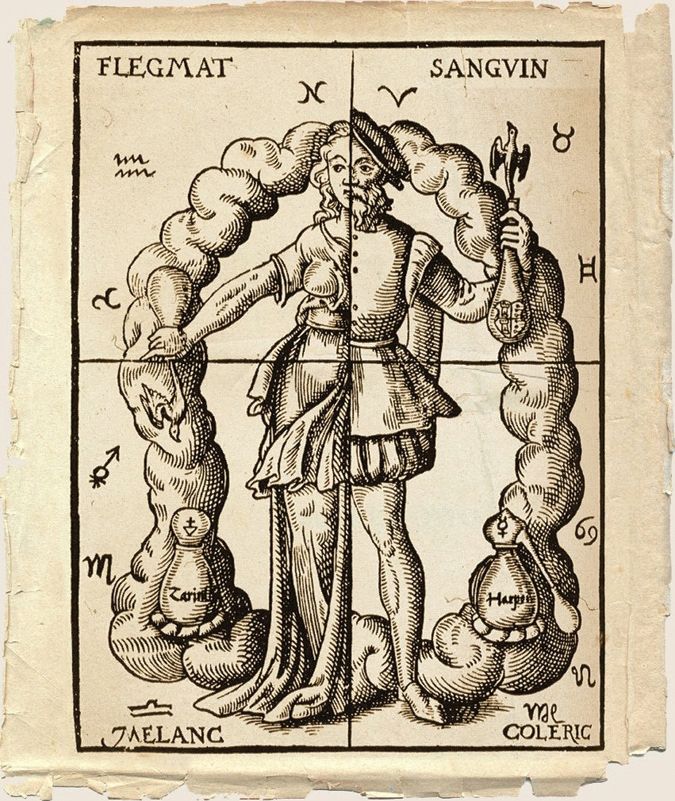
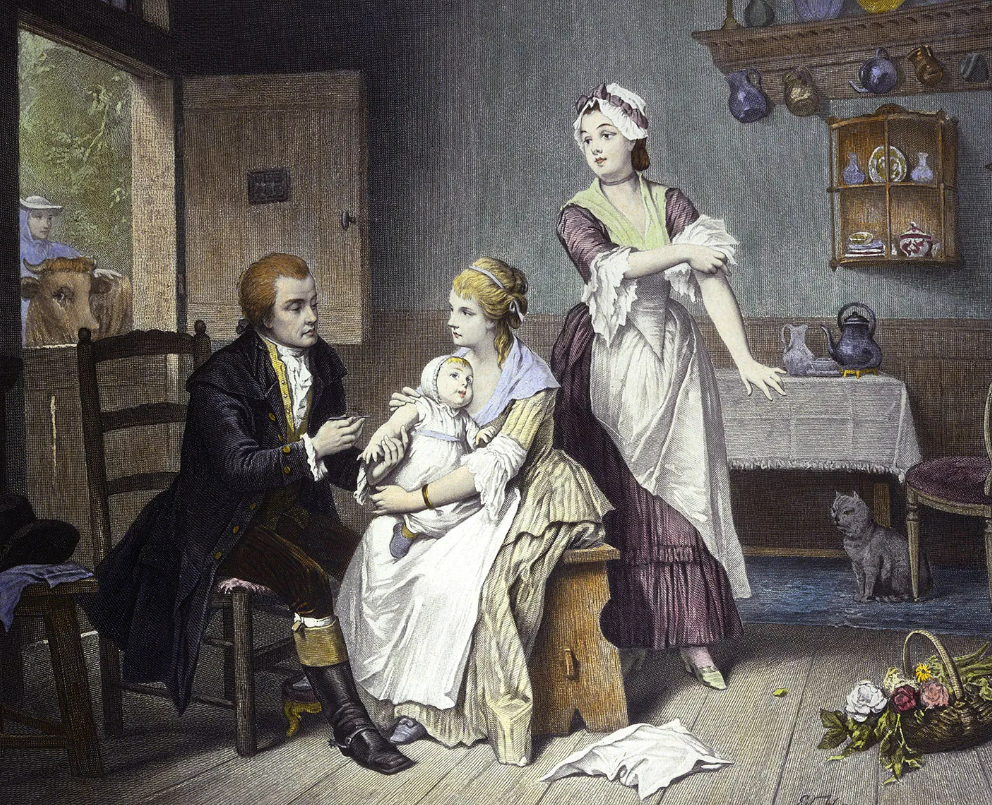
Eugenics

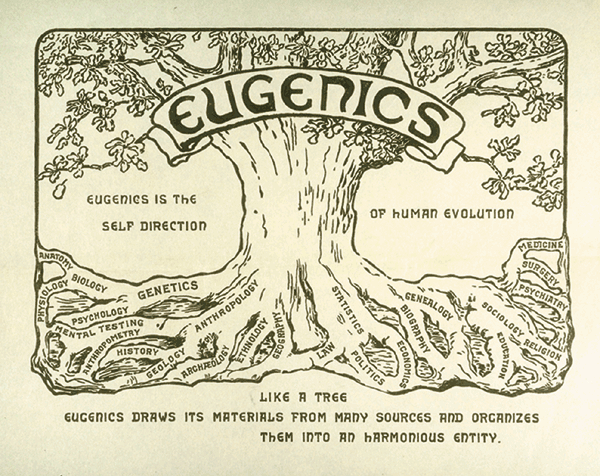
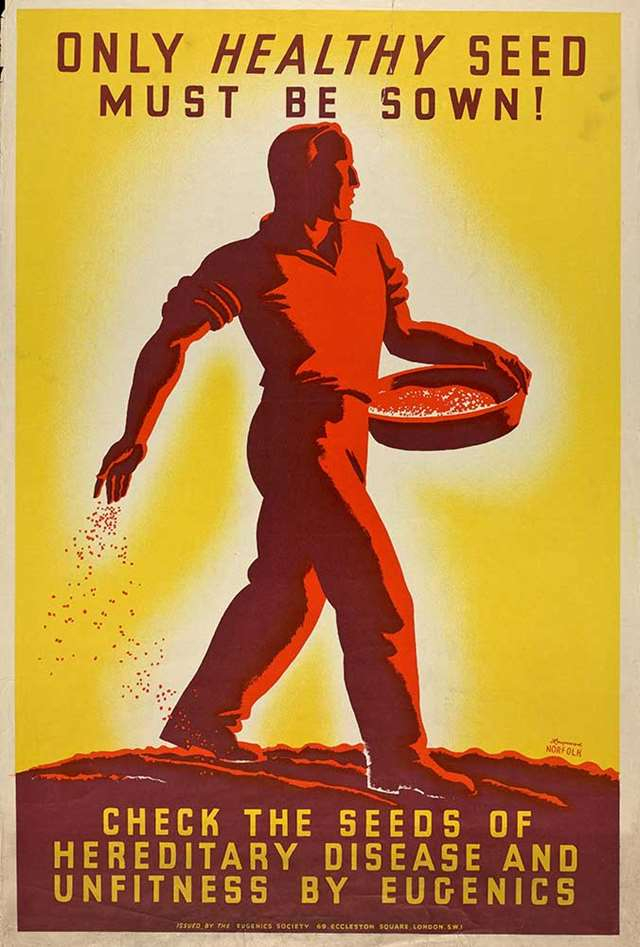
In 1883, Francis Galton, an English statistician, demographer, ethnologist (and cousin to Charles Darwin,) came up with the term "eugenics." Galton defined eugenics as “the study of agencies under social control that may improve or impair the racial qualities of future generations either physically or mentally.” Galton believed that our health, diseases, and social and intellectual characteristics, are passed down from our ancestors and differ between races.
During the 1870s and 1880s, as concepts of “improving humanity” and race science gained in popularity, experts determined that some individuals and groups of people were superior or inferior to others because of their biology. They thought these biological and behavioral traits couldn't be changed, and they sorted people into a hierarchy based on these beliefs.
By the 1920s, eugenics had become a popular idea all over the world. Governments, academics, and the general public all believed in the idea that certain groups of people were superior or inferior based on their biology and behavior. The most well-known example of eugenics was in Nazi Germany, where the government tried to "cleanse" their population by killing or sterilizing people they deemed "unworthy of life." This included marginalized groups like the Jewish and Roma people, individuals with disabilities, LGBTQ+ people, and others. The Nazi regime killed at least 70,000 adults and 5,200 children and forced at least 400,000 people to be sterilized.
In the early 20th century in the United States, there was a strong connection between slavery, fears of miscegenation, and eugenics. American eugenicists believed that immigrants and non-white races were having more babies than native-born white people, and they promoted discriminatory policies like anti-immigration and sterilization. They labeled certain people as "unfit" or "feebleminded" and sterilized at least 60,000 people through state laws by the 1970s. This disproportionately affected marginalized groups like Latinxs, Native Americans, African Americans, poor whites, and people with disabilities. Eugenicists also played a pivotal role in passing discriminatory immigration laws in 1924 (the Johnson-Reed Act) that excluded immigrants from Asia.
Key Terminology
Eugenics –a theory that became popular in the early 20th century, which aimed to improve the human race through “racial improvement” and “planned breeding.” Eugenicists believed they could eliminate social problems by using methods like involuntary sterilization, segregation, and social exclusion to get rid of people they considered unfit. However, this theory was based on faulty science and led to numerous unethical and discriminatory practices.
New Eugenics – a movement that advocates for using reproductive technology and human genetic engineering and counseling to enhance human characteristics and capacities. Also known as neo-eugenics or liberal eugenics, proponents seek to resolve many “problems” and social issues through biological means (prenatal genetic screening for disability, in-utero surgeries, cochlear implants, etc.)
Race Science - an ideology that appropriates the methods and legitimacy of science to argue that white Europeans are superior to non-white people. Similar to the eugenics movement, scientific racism grew out of:
-
Misappropriation of medical, anatomical, and statistical advancements from the 18th and 19th centuries.
-
Charles Darwin's theory of evolution and natural selection
-
Gregor Mendel's laws of inheritance.
Scientific racism was supported by contemporary xenophobia, antisemitism, sexism, colonialism, imperialism, and, especially in the United States, justifications for slavery.
Miscegenation - the term used for marriage or cohabitation between people of different races. The idea that this could cause problems in children has been disproven by modern genetics and anthropology. However, many societies still have taboos against miscegenation, and in some cases, laws were enforced to prevent it. For example, in South Africa, the apartheid policy included legal prohibitions against miscegenation. In the United States, many states had laws against interracial marriage until 1967 when the Supreme Court declared them unconstitutional.
Additional Resources
- The Meaning of Eugenics: Historical and Present-Day Discussions of Eugenics and Scientific Racism.
- The National Human Genome Research Institute organized a symposium that spanned two days and focused on exploring the history of eugenics and scientific racism, and the ways in which these complex legacies continue to influence modern health sciences. Along with this, the U.S. Holocaust Memorial Museum and the American Museum of Natural History also contributed by presenting their own initiatives on these issues and providing free educational and scholarly resources.
- The Anti-Eugenics Project was started by Dr. Jack Tchen and Benedict Ipgrave of Rutgers University and University College London respectively. An interdisciplinary network, the Project brings together scholars, organizers, cultural workers, and artists, who want to understand and raise awareness about how eugenicist ideas still cause harm today. The Anti-Eugenics Project seeks to uncover and investigate the lasting effects of eugenics, which is the belief that some people are "better" than others, and dismantle the politics and systems of exclusion. Eugenics continues to plague our society in the forms of racism, classism, misogyny, ableism, homophobia, transphobia, xenophobia and other forms of social tyranny.
-
Nazi Race Science
-
Between 1933 and 1945, Nazi Germany aimed to “purify” German society of people who were seen as biological threats to the country's "health." They worked with doctors, medically trained geneticists, psychiatrists, anthropologists, and other medical professionals to develop policies that would improve the "racial health" of the nation. They began by sterilizing people who were considered to have genetic diseases and ended with the near annihilation of European Jews. The Nazi regime used the ideas and legitimacy provided by "racial" science to justify their actions. They carried out about 400,000 forced sterilizations and over 275,000 euthanasia deaths. This campaign resulted in the Holocaust, where millions of "racial" enemies were killed.
-
This list of books, articles, video and online resources was put together to help people find resources in the United States Holocaust Memorial Museum collection about the history of Nazi racial science. Additional resource lists and bibliographies curated by the USHMM can be found here, covering topics such as the Sinti and Roma people, Nazism and the Jim Crow South, and medical experiments. These resources can also be found at public or academic libraries or elsewhere online.
-
-
Ancient Healing and Medicine
Ancient Egypt
The civilization of Ancient Egypt lasted from around 3150 BCE to 332 BCE, covering parts of present-day Egypt, Sudan, and South Sudan. During this time, the Egyptians had a well-established system of medicine that remained mostly unchanged. They were skilled in non-invasive surgery, bone setting, dentistry, and had an extensive collection of medicines. Their medical practices influenced later cultures such as the Greeks.
Eye surgery was a common procedure due to the desert environment, which caused foreign objects to irritate the eyes. Night-Blindness was cured by feeding the patient powdered liver rich in Vitamin A. They also performed dentistry, including extracting teeth and creating false teeth. They knew how to suture wounds and used raw meat and honey to help heal wounds and fight infections. The Ancient Egyptians even used moldy bread as an antibiotic long before penicillin was discovered by Fleming.
Ancient Asia
Traditional Chinese medicine heavily influenced medical and healing practices in early Chinese dynasties. The philosophy of traditional Chinese medicine was based on empirical observations of disease and illness by Taoist physicians. Acupuncture, the practice of inserting needles into the skin to affect the distribution of the yin and the yang, dates back to before 2500 BCE.
Japanese medicine was greatly influenced by Chinese medicine, with the oldest Japanese medical work, Ishinhō, based entirely on older Chinese medical works. In ancient times, disease was regarded as sent by the gods or produced by evil spirits. Treatment and prevention were based largely on religious practices such as prayers, incantations, and exorcism, and later, drugs and bloodletting were employed.
The Atharvaveda, a sacred text of Hinduism, dating back to the Early Iron Age, contained prescriptions of herbs for various ailments. This use of herbs to treat ailments would later form a significant part of Ayurveda, another medical system of India. The earliest foundations of Ayurveda were built on a synthesis of traditional herbal practices and new conceptualizations, nosologies, and therapies dating from about 600 BCE, coming out of the communities of thinkers that included the Buddha and others.
Key Terminology
Additional Resources

